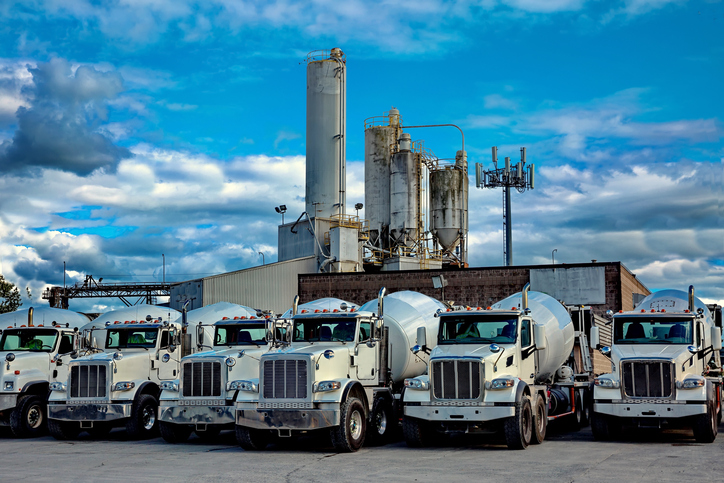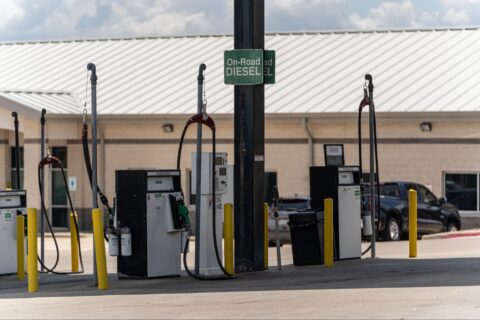Understanding On-Road Diesel Fuel Standards and Quality
The chemicals in on-road and off-road diesel fuel are the same. At the nearby gas station, you can buy on-road diesel, which is also called clear diesel. When off-road fuel is dyed red, it is sold in bulk.
They are only different in color, price, and what they are meant to be used for. In the past, off-road diesel had more sulfur, which made it burn with more smoke.
Since the Environmental Protection Agency (EPA) changed the Diesel Fuel Regulations for fuel standards over time, starting in 2008 and ending in 2014, the two fuels are basically the same, only the color is different, as stated by many users over time.

What Is Off-Road Diesel And Regular Diesel?
As mentioned earlier, there is no difference other than price, style, and use. It used to be that the EPA had stricter rules about regular diesel fuel. There are the same rules for both on-road and off-road diesel since 2014. These rules cover Sustainable Diesel Practices such as pollution guidelines, sulfur levels, and fuel quality.
Both state and federal tax rules spell out the uses of diesel fuel that are not taxed. The federal rules apply to all states and regions, but some uses may be allowed in some areas rather than others. There are also different tax rates in each state, but the federal taxes are the same everywhere.
To put it simply, off-road fuel cannot be used in any vehicle or equipment that travels on public highways and is not paid for. The majority of petrol stations sell fully charged diesel that is suitable for usage on public roadways.
Which vehicles need off-road diesel?
All cars do not strictly need off-road gasoline. Any vehicle with a diesel engine can run on On-Road Diesel Standards. However, it also implies that taxpayers who don’t utilize public roads—farmers, construction enterprises, and others—will pay higher taxes.
Off-road diesel may save up to 25 cents per gallon. For industries like farming and construction that use a lot of water, this may save a significant amount of money. However, if you do not use off-road fuel properly, you may be fined $10,000. Trying to avoid paying the high rates of commuter gasoline can end up costing you more money than it saves on petrol.
Fuels are subject to stringent regulations. What do these guidelines include, and what are they?
These On-Road Diesel Standards ensure that, whether they are using standard or alternative fuel, your vehicles and equipment perform at their peak when they are using the best fuel.
What kind of fuel is specified by BS 2869?
Farming equipment and heating systems employ British Standard (BS) 2869, the country’s fuel oil and gas oil standard. This standard describes intermediate distillates utilized in the previously mentioned processes of refining crude oil. According to the BS 2869 standard, there are four fuel types that are ideal for various applications:
- Grade A2 Gas Oil is diesel fuel for tools and engines that don’t go on the road;
- As for Grade D Gas Oil, it is diesel fuel used for heating and older engines;
- Grade C1 fuel is the best fuel for heating homes.
- Grade C2 kerosene is regular kerosene that is used to heat homes.
What does EN 590 mean for fuel?
The EN 590 standard is the European guideline for low-sulfur diesel fuel. It lists the requirements that diesel fuel must meet in order to be used in cars. The Diesel Fuel Quality that a diesel-engine road vehicle (DERV) and most farm equipment need is of this standard. Low Sulfur Diesel is another name for it.
Because EN 590 is higher than BS 2869, all diesel engines in Europe are made with this in mind. The Euro 6 On-Road Diesel Fuel Standards must also be met by these engines. When you buy red diesel (gas oil) from Crown Oil, you’ll get EN 590 red diesel. This is the same type of fuel that the gas station uses to fill up your diesel car, but it’s been colored red.
What does EN 15940 mean for fuel?
EN 15940 is a European standard for paraffinic diesel fuel used in cars. It controls a new breed of cleaner transportation fuels that can be used in cars. It’s also called BS EN 15940, where BS stands for British Standard.
Paraffinic diesel fuel is an alternative fuel made from green feedstocks or natural gas that is synthesized or hydrotreated. This standard is for fuel that can be used in diesel engines and cars that can handle paraffinic diesel fuel.
What does EN 14214 mean for fuel?
A European On-Road Diesel Fuel Standards called EN 14214 spells out the rules and tests for FAME, which stands for Fatty Acid Methyl Esters-containing biodiesel. FAME is the most common type of biodiesel that is mixed with regular diesel.
Final Words
Fuel quality has an impact on everyone logistically, from lawnmowers to tractor trucks, since it may be the cause of your vehicle not starting and your generator not working. In many cases, a minor application just requires replacing the gasoline before any harm is done, allowing you to continue driving. Engines and equipment need high-quality gasoline to function as intended. If this type of fuel isn’t being delivered, as is often the case, slow component wear and failure may result in expensive repairs, especially in and around the fuel injection system.
It is advised to implement fuel management systems and practices to guarantee fuel quality and lessen the impacts of contamination.

